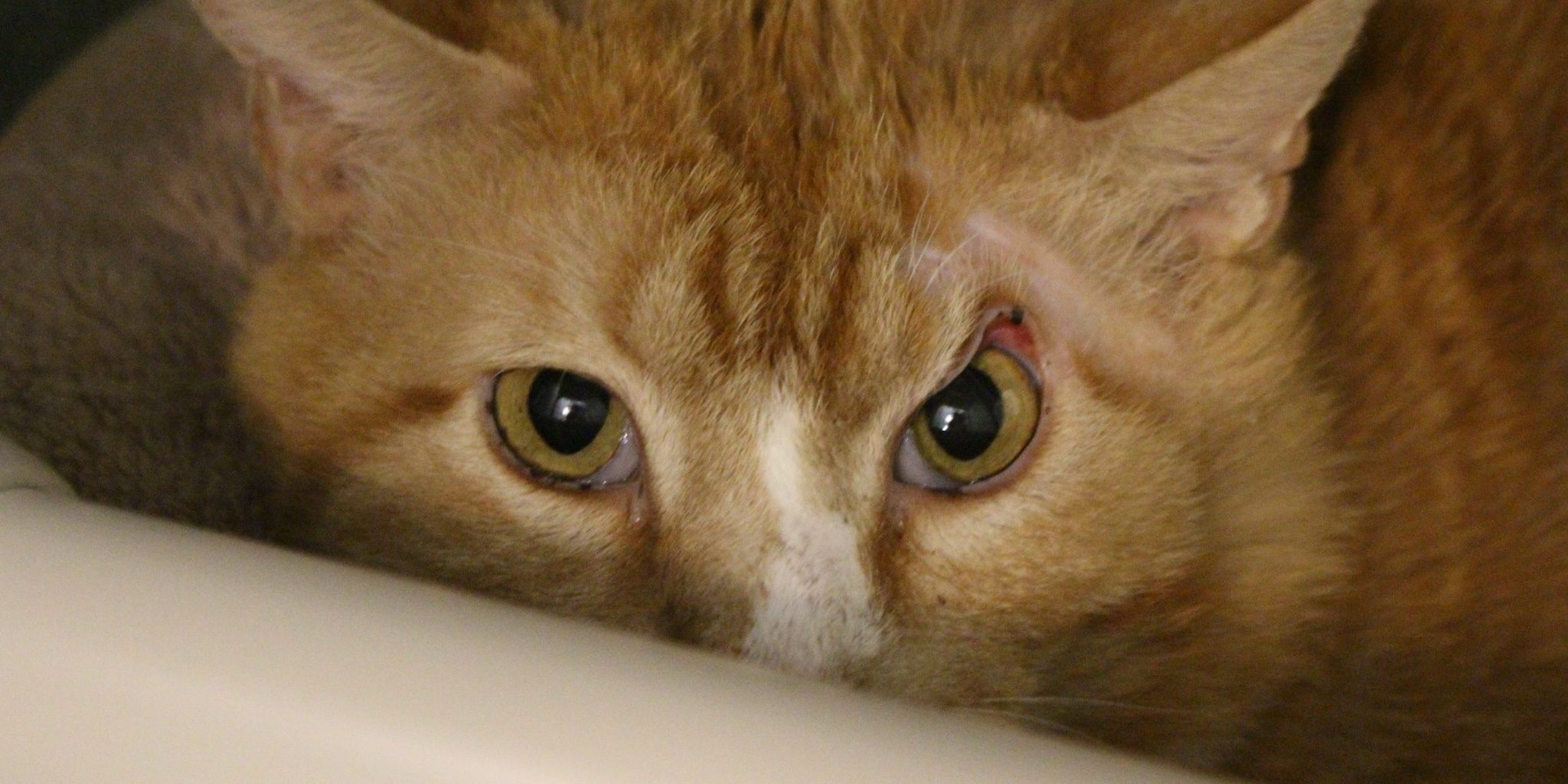Not all kitties are immediately trusting of their new surroundings and their new caretakers. Some of them need a little more coaxing to recognize that they are in a safe place with people who aren’t going to hurt them. When your kitty’s history is one of abuse, neglect, or abandonment, the process can take quite a while, but patience, love, and the following steps will win out in the end.
Limited Territory
The more scared a kitty is, the more important it is that they have a safe space to call their own with no surprises. A bathroom or a single bedroom (but make sure you have appropriate furniture, see ‘Managed Hiding Spaces’) is ideal for this since they can see their entire domain at once and know that nothing is coming around a corner to get them.
Managed Hiding Spaces
When you first get a scaredy cat, give them a place to hide, but make sure you can still get them easily. A cardboard box or a plastic tub with a towel inside, or one of those adorable fluffy ‘cat cave’ beds. Any furniture that makes it hard to get them or see them should be removed beforehand. The cats need to have some exposure to you when you’re around, which means not hiding in the furthest corner with their eyes averted. Hiding too far means they never face their fears and realize you’re not so bad. Worse, it’s hard to get cats out from under beds or dressers and the process is traumatic if you ever need to. Don’t set yourself up for a setback.
Two Litterboxes
Provide everything they need in this space- food, water, toys, and two litterboxes if possible. Why two boxes? Going to the restroom is also a way of marking territory, so having multiple boxes means they’re less likely to go outside of the box if they’re feeling insecure. If space allows, put them on opposite ends of the room so they’re staking a claim along their ‘borders’. Also, some kitties like using one box for one type of business and the other for another. The recommended number of boxes for any given household is the number of cats plus one.
Scheduled Feeding
Cats like routine. If they know when to expect you with dinner, they will be less likely to be surprised when you come in unannounced. Sit when them while they eat. They’ll start to associate you with being safe and their provider. If they start eating and don’t hiss, growl or run when you pet them, pet them while they eat. Otherwise, just sit in the room and talk while they do. If they don’t eat at all while you’re there, sit for five minutes and talk to them anyway, occasionally shaking the bowl if it’s dry food, or leaving wet food close enough for them to see and smell.
Play Therapy
The younger the cat, the more likely they are to want to play, play, play. Use distanced toys such as lasers (be careful of their eyes!) and wand toys (we personally love ‘Da Bird’ on Amazon) are great for getting scaredy cats to forget that you’re there and instead focus on the toy. Drag it along the edge of walls or room furniture to simulate a mouse running along, or swoosh it through the air and have it ‘land’ a short distance from them to encourage pounce behavior. If the kitty seems afraid of the toy at first, keep it in one place and twitch it to let the kitty come investigate it on its own terms. Don’t ‘chase’ a cat with a toy. That’s not how prey works!
Just as with feeding time, if you can have a scheduled time for play therapy, that’s even better. Cats need about 30 minutes a day of exhaustive interactive play. We recommend two sessions of 15 minutes. Leave some treats when you’re done, to simulate the ‘hunt’, where a job well done has earned them a meal.
Brush Therapy
Not all cats like to be touched, especially those who have been abused in the past. To them, hands are dangerous, even if they like being stroked. Never fear! You can still interact with your kitty from your respective comfort zones by using a soft brush. We’ve even seen people taping a stick to their brush for added distance for those, particularly finicky kitties. Make sure the cat has a chance to sniff the brush and start by just resting it near them, then by them, then on them, and doing soft, gentle strokes. That said, not all cats like being brushed, so if they’re just getting upset, don’t push it.
If they like to be brushed, or even if they just tolerate it, try to fit in some scheduled brush time, too, pushing the limits just a bit every time you do to see what the kitty will allow. If you’re using a stick, try a shorter stick one day. Maybe then just use the brush.
The First Touch
If you feel comfortable enough to try petting them with just your hand, be sure they have a chance to smell it first, with your palm down. If you’re not sure, get a stiff garden glove and use that as a puppet hand to see how they react, then if they swat at you, it’s just a glove.
We recommend seeing if they’ll tolerate you touching their tail first (but do NOT reach over them for any reason), and if they don’t react negatively there, try stroking the top of their head. Move slowly and murmur calmly while you do. If they start getting agitated- their tail thrashing or they have a lunge reflex, stop immediately and offer them a treat for tolerating you so far.
Introducing Them To The House
When the cat is completely comfortable with you being in the room with them and they’re interacting with you rather than hiding, you can consider letting them check out the rest of their turf. Leave the door open a crack so they can peek out and explore on their own terms. Don’t close off their existing territory- they still need a safe place to go back to! You can start coaxing them out by feeding just outside the door and moving the food bowl further and further out. You can also move one of the litter boxes to expand their ‘boundaries’, but leave one box where they’re accustomed to it, so they don’t go outside the box.
If you have other pets in the house, introduction is a whole different story and you need to look into it or risk starting all over again. For solo cats though, in most cases, these steps will help you and your cat settle into your new lives together in happy equilibrium.
If you have questions or comments, please let us know!
Kate Scheer
Deputy Director






